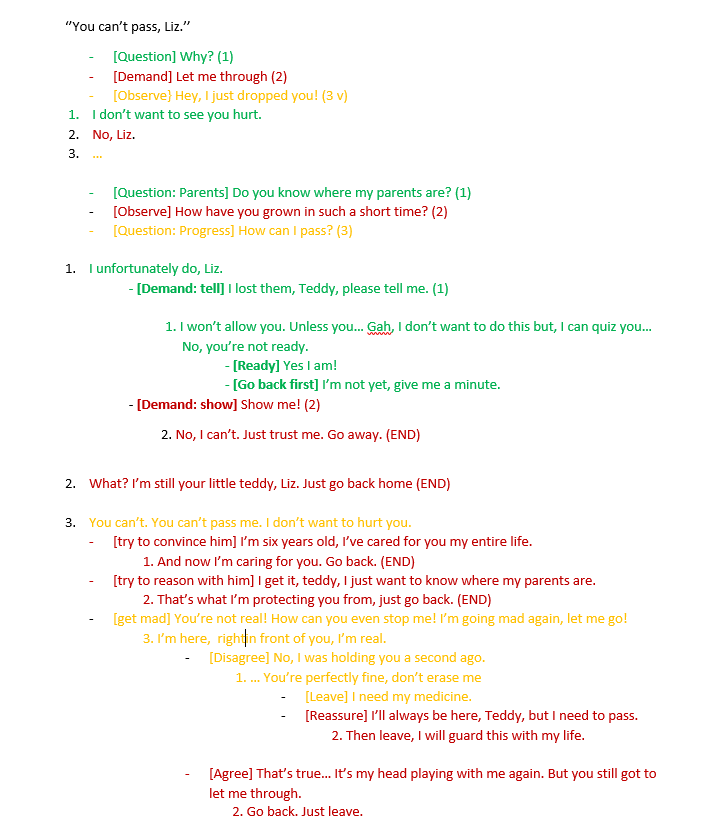For school we have to make a small adventure game in C# (Visual Studio 2015) with a custom game engine made by our teacher. Now I want to implement a small dialog system between Liz (The main characer) and her teddybear.
The way I would like it to work is by using buttons. The bear starts out with "I can't let you pass Liz". Then the player can choose between three options (which are buttons) 1. [Question] 2. [Demand] 3. [Observe].
I am just not sure how to implement this and what would be the most efficient way of doing this codewise. To make it a bit more clear I've added an image of the entire dialog that needs to be implemented. 
Any help/tips would be welcome!
Thanks in advance
